Unveiling the Enigma: Left Brain or Right Brain Dominance
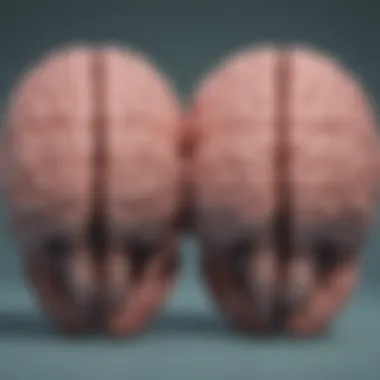
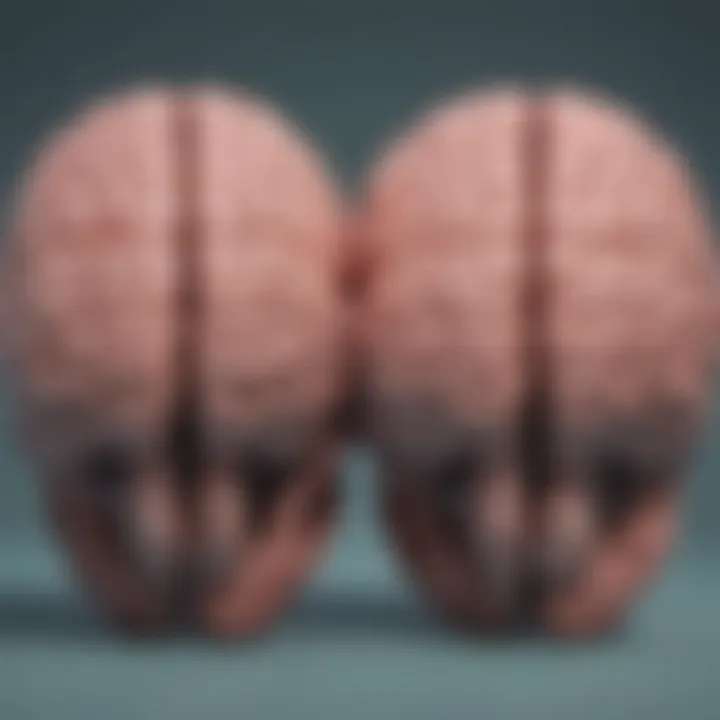
Research Overview
The concept of left brain versus right brain dominance has long intrigued researchers and individuals alike around the world. It delves into how each hemisphere of the brain influences behaviors, thoughts, and preferences, shaping our cognitive processes and impacting personal development. Whether you tend towards logical analysis or creative expression, understanding the differences between the two hemispheres offers valuable insights into the workings of the mind.
Health Implications
Exploring the implications of left brain and right brain dominance on health reveals intriguing connections between cognitive functioning and overall well-being. By examining how these dominant traits can influence daily habits and decision-making processes, individuals can gain a deeper understanding of their mental processes and potentially enhance their health outcomes. Unraveling the complexities of brain dominance can shed light on how to optimize mental wellness and address potential risks associated with an imbalance in cognitive strengths.
Well-being Strategies
Practical strategies derived from research on left brain and right brain dominance provide actionable steps for individuals seeking to harness the power of both hemispheres. Implementing positive changes in daily routines, such as incorporating activities that stimulate both analytical and creative thinking, can lead to a more balanced cognitive approach. Personal stories and case studies further exemplify the effectiveness of these strategies in promoting overall well-being and enhancing cognitive flexibility.
Expert Insights
Analyzing expert opinions on the topic of left brain and right brain dominance offers invaluable perspectives on the implications of cognitive preferences. Conducting Q&A sessions with experts in the field provides a deep dive into the nuances of brain hemisphericity and its effects on cognition and behavior. By synthesizing expert insights with research findings, readers can gain a comprehensive understanding of the multifaceted nature of brain dominance and its real-world applications.
Introduction
In the exploration of brain hemispheres, the dichotomy of left brain versus right brain dominance unveils profound insights into how our behaviors, thoughts, and preferences are shaped. By deciphering the distinctions between these hemispheres, a window into the intricate workings of our cognitive processes is opened, offering a pathway towards personal development and self-awareness. This article embarks on a journey to unravel the intricacies of left and right brain functions, shedding light on their immense impact on our daily lives.
Brief Overview of Brain Hemispheres
The Concept of Left Brain and Right Brain
The fundamental concept of left brain and right brain dominance lays the foundation for understanding the complexities of human cognition. The left brain is associated with analytical thinking, language processing, and logic, while the right brain governs creative thinking, intuition, and visual processing. Each hemisphere bears distinct functions, contributing uniquely to our cognitive capabilities and behaviors. Exploring the concept of left brain and right brain unveils the duality of human intellect and emphasizes the necessity of a harmonious interplay between these hemispheres for holistic cognition.
Functions of the Left Hemisphere
The left hemisphere of the brain plays a critical role in logical reasoning, mathematics, language comprehension, and sequential processing. It excels in tasks that require analysis, organization, and verbal skills. While its stronghold lies in structured thinking and problem-solving, an overemphasis on left hemisphere functions may lead to rigidity and a lack of creativity.
Functions of the Right Hemisphere
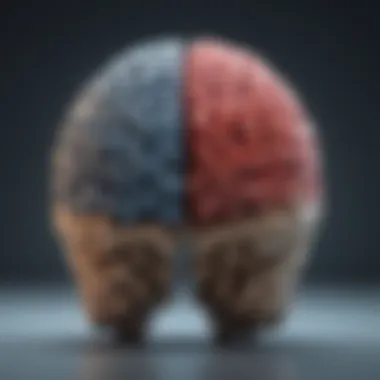
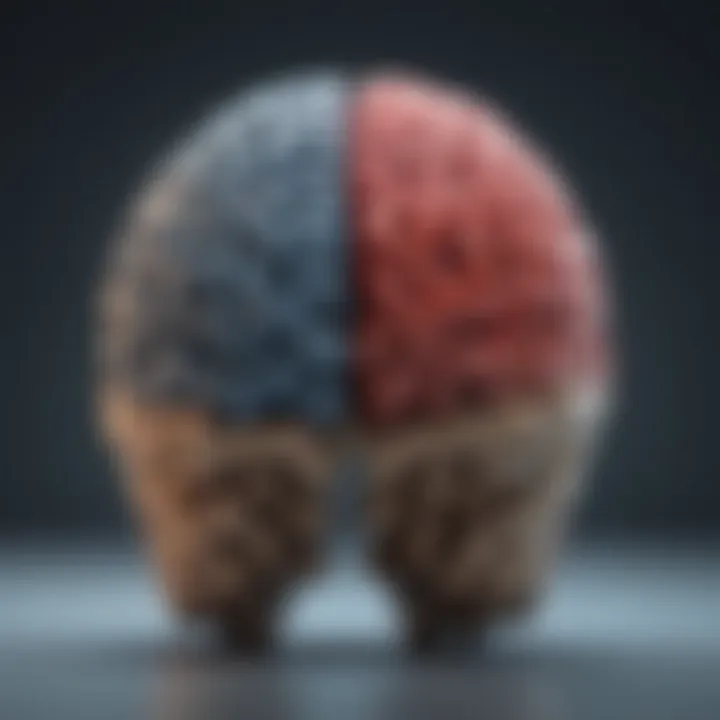
Contrasting with its counterpart, the right hemisphere orchestrates creativity, imagination, spatial awareness, and emotional intelligence. It thrives in tasks that demand innovation, holistic perception, and artistic expression. The right hemisphere's intuitive nature complements the left hemisphere's rationality, facilitating a balanced cognitive approach that integrates logic with creativity.
Key Differences Between Left and Right Brain Dominance
Analytical Versus Creative Thinking
The dichotomy between analytical and creative thinking epitomizes the contrast between left and right brain dominance. Analytical thinking, synonymous with the left hemisphere, revolves around logical reasoning, critical evaluation, and problem-solving based on structured data. In contrast, creative thinking, governed by the right hemisphere, fosters innovation, idea generation, and lateral thinking, tapping into imagination and intuition for novel solutions
Logic Versus Intuition
Whereas logic, a hallmark of left brain dominance, emphasizes reasoning, evidence-based conclusions, and deductive thinking, intuition, attributed to the right brain, relies on instinct, gut feelings, and holistic perceptions to navigate complexities. Integrating logic and intuition cultivates a comprehensive decision-making approach that values both empirical evidence and intuitive insights
Verbal Versus Visual Processing
Verbal processing, dominated by the left hemisphere, encompasses language comprehension, speech production, and textual analysis. Contrarily, visual processing, spearheaded by the right hemisphere, centers on image interpretation, spatial orientation, and pattern recognition. The interplay between verbal and visual processing channels a multidimensional understanding of information, enriching cognitive processes and communication strategies
Debunking Common Myths about LeftRight Brain Dominance
Myth of Pure Left or Right Brain Dominance
One prevalent myth surrounding left and right brain dominance is the notion of pure specialization in either hemisphere. Contrary to popular belief, individuals do not solely rely on one hemisphere for all cognitive functions but rather exhibit a dynamic interaction between both hemispheres. Dispelling this myth underscores the complexity of brain functioning and emphasizes the integrated nature of cognitive processes that transcend unilateral dominance
Implications for Personal Traits and Abilities
The implications of left and right brain dominance extend to personal traits and abilities, influencing an individual's strengths, preferences, and cognitive styles. Understanding how each hemisphere contributes to one's disposition sheds light on areas of proficiency, challenges, and the potential for growth. Acknowledging the multifaceted nature of brain dominance empowers individuals to leverage their cognitive diversity for personal development and learning optimization
Neuroscience Perspectives on Brain Hemisphere Functions
From a neuroscientific standpoint, the functions of the left and right hemispheres offer a nuanced perspective on brain lateralization. Recent studies emphasize the interconnectedness of brain hemispheres in cognitive processes, highlighting the dynamic interplay between analytical and creative functions. Neuroscientific insights underscore the adaptive nature of brain plasticity and the role of environmental stimuli in shaping brain hemisphere functions, reinforcing the significance of holistic brain utilization for enhanced cognitive abilities and well-being
Assessing Your Dominant Hemisphere

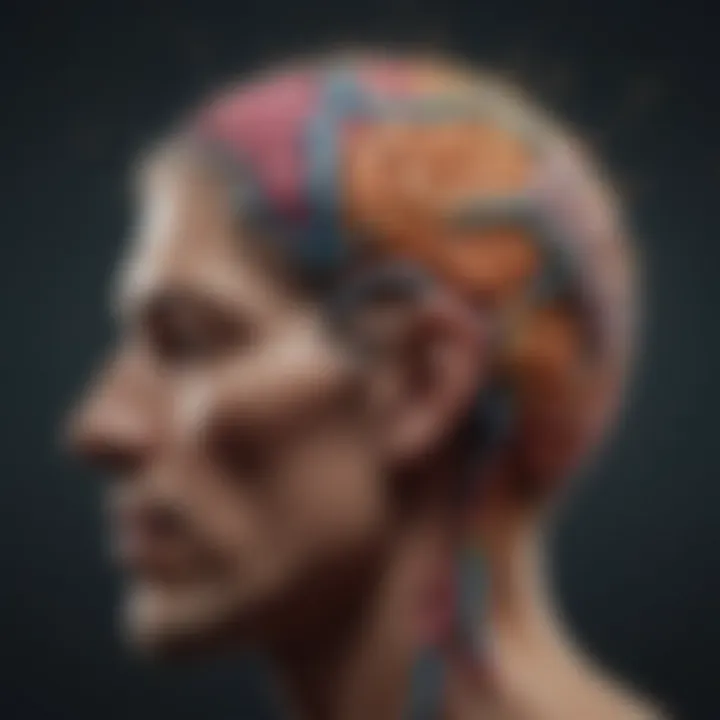
In this article, delving into the intriguing concept of left brain versus right brain dominance, assessing your dominant hemisphere holds significant importance. By understanding which side of your brain is more dominant, individuals can gain valuable insights into their cognitive processes, behaviors, and preferences. This assessment serves as a foundational step towards self-discovery and personal development. Knowing whether you lean more towards analytical left-brain thinking or creative right-brain thinking can aid in enhancing various aspects of your life.
Online Tests and Assessments
Popular Tests for Determining Brain Dominance
Discussing popular tests for determining brain dominance is crucial in unraveling the mysteries of our cognitive functions. These tests are designed to assess which hemisphere of the brain is more dominant based on a series of questions or activities. One such prominent test is the Hemispheric Dominance Test, which focuses on tasks that stimulate either the left or right hemisphere, allowing individuals to recognize their dominant side. Taking these tests can provide individuals with a clearer understanding of their thinking patterns and cognitive strengths, guiding them towards activities or professions that align with their dominant hemisphere.
Interpreting Test Results
Interpreting test results from brain dominance assessments is a key aspect of self-discovery and personal growth. Once individuals have completed the tests, understanding the implications of the results is paramount. Each test result may reveal whether one leans towards logical thinking, intuition, verbal processing, or visual processing. By analyzing and interpreting these outcomes, individuals can harness the power of their dominant hemisphere in various aspects of their lives, from decision-making to problem-solving.
Self-Reflection and Observation
Awareness of Cognitive Preferences
Enhancing awareness of one's cognitive preferences is an essential step in the journey of self-discovery. Being cognizant of whether one gravitates towards analytical thinking or creative ideation allows individuals to tailor their activities and pursuits accordingly. By recognizing their cognitive inclinations, individuals can make informed choices that resonate with their brain dominance, leading to greater fulfillment and productivity.
Identifying Strong Suits and Areas for Growth
Identifying one's strong suits and areas for growth goes hand in hand with assessing brain dominance. Through self-reflection and observation, individuals can pinpoint their strengths, leveraging them to excel in their endeavors. Moreover, identifying areas that require development enables individuals to work on enhancing skills related to their less dominant hemisphere. This balanced approach fosters holistic personal growth and empowers individuals to thrive in diverse environments.
Implications of Brain Dominance in Everyday Life
In this fascinating article, we delve into the profound impact of brain dominance on various aspects of everyday life. Understanding how our dominant hemisphere influences our behaviors, thoughts, and preferences is crucial for personal development. By unraveling the differences between the left and right brain functions, we can gain valuable insights into our cognitive processes. This knowledge not only enhances self-awareness but also empowers individuals to utilize their strengths effectively while addressing areas that may require growth.
Career Choices and Professional Development
Impact of Brain Dominance on Job Selection
Exploring the impact of brain dominance on job selection is crucial in matching individuals with roles that align with their cognitive strengths. Understanding whether one has a dominant left or right brain hemisphere can shed light on the type of roles that may be more suitable. Those with strong analytical and logical skills, characteristic of left-brain dominance, may excel in professions such as accounting, engineering, or programming. Conversely, individuals with a dominant right brain, known for creativity and intuition, may thrive in fields like art, design, or counseling. Recognizing how brain dominance influences job selection is fundamental in maximizing one's potential and job satisfaction.


Enhancing Skills Based on Hemisphere Strengths
Enhancing skills based on hemisphere strengths involves leveraging the unique capabilities of each brain hemisphere to improve overall performance. For individuals with left-brain dominance, honing analytical and critical thinking abilities through activities such as problem-solving exercises and data analysis can boost effectiveness in decision-making roles. On the other hand, those with a dominant right brain can enhance creativity and innovation by engaging in activities like brainstorming sessions, art projects, or exploring unconventional solutions to challenges. By recognizing and developing skills aligned with hemisphere strengths, individuals can not only excel in their current roles but also expand their professional capabilities.
Interpersonal Relationships and Communication
Understanding Communication Styles
Understanding communication styles in the context of brain dominance is key to effective interpersonal relationships. Individuals with left-brain dominance may prefer clear, structured communication that focuses on facts and logical reasoning. In contrast, those with right-brain dominance may lean towards creative expression, visual cues, and emotional resonance in their interactions. Recognizing these differences can aid in improving communication dynamics, fostering empathy, and promoting better understanding between individuals with varying brain dominance.
Resolving Conflicts with Differing Brain Dominance
Resolving conflicts that arise from differing brain dominance requires sensitivity and adaptability in communication. When individuals with opposing brain dominance engage in conflict, misunderstandings may occur due to differing perspectives and communication styles. Employing active listening, open-mindedness, and willingness to understand the other person's cognitive preferences can help in bridging these gaps. By acknowledging and respecting the unique traits of each brain hemisphere, conflict resolution can be achieved more effectively, nurturing harmonious relationships.
Personal Growth and Well-Being
Utilizing Both Hemispheres for Holistic Development
Optimal personal growth and well-being involve harnessing the strengths of both brain hemispheres for holistic development. Integrating the analytical prowess of the left brain with the creativity and intuition of the right brain creates a balanced cognitive approach. This balanced utilization fosters comprehensive problem-solving skills, enhanced creativity, and a more nuanced understanding of complex situations. By consciously engaging both hemispheres, individuals can experience personal growth on multiple levels, leading to a more fulfilling and enriched life.
Mindfulness Practices to Balance Brain Functions
Mindfulness practices play a vital role in balancing brain functions and promoting overall well-being. Mindfulness techniques, such as meditation, deep breathing exercises, and mindfulness-based stress reduction, help in quieting the mind's chatter and promoting mental clarity. By incorporating mindfulness into daily routines, individuals can enhance cognitive function, reduce stress levels, and cultivate emotional resilience. The practice of mindfulness serves as a powerful tool in harmonizing the functions of both brain hemispheres, fostering inner peace, and supporting personal well-being.
Conclusion
In the realm of understanding the complex dynamics between our left and right brain hemispheres, the conclusion serves as a pivotal point of reflection and synthesis. It encapsulates the core essence of the entire discourse on brain dominance and cognition, offering profound insights into the intricacies of human behavior and thought processes. The conclusion underscores the significance of harmonizing both the left and right brain functions to attain a balanced cognitive approach in various facets of life. By embracing the amalgamation of analytical and creative thinking capacities, individuals can unlock their full potential and enhance their overall cognitive abilities.
Embracing the Complexity of Brain Hemispheres
Appreciating the Versatility of Human Cognition
The notion of appreciating the versatility of human cognition delves into the multifaceted nature of mental processes influenced by both the left and right hemispheres. It accentuates the adaptive nature of human cognition, emphasizing the fluidity with which individuals can navigate between analytical reasoning and imaginative ideation. This aspect highlights the broad spectrum of cognitive functions that individuals can harness, showcasing the richness of human intellectual capabilities. By acknowledging and embracing this versatility, individuals can cultivate a holistic approach to problem-solving and decision-making, leveraging the diverse strengths of both brain hemispheres for enhanced cognitive agility in various contexts. The flexibility inherent in appreciating the versatility of human cognition allows individuals to adapt to changing environments and challenges, fostering a dynamic and resilient mindset.
Continual Learning and Adaptation for Balanced Brain Utilization
Continuous learning and adaptation play a pivotal role in achieving a harmonious balance in brain utilization, ensuring that both the left and right hemispheres are actively engaged and synergized. This aspect underscores the importance of ongoing cognitive development and enhancement through exposure to new experiences, knowledge acquisition, and skill refinement. By fostering a mindset of continual learning, individuals can stimulate neural plasticity and strengthen neural connections across both brain hemispheres, facilitating seamless information processing and cognitive harmonization. The key characteristic of continual learning lies in its capacity to instill a growth mindset, encouraging individuals to embrace challenges and seek opportunities for intellectual advancement. This proactive stance towards learning and adaptation fosters cognitive resilience and empowers individuals to leverage their cognitive potential to the fullest. While continual learning requires dedication and commitment, its benefits in cultivating balanced brain utilization and optimizing cognitive performance are invaluable in promoting personal growth and overall well-being.



